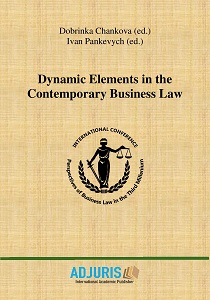Parliamentary Groups - Internal Structures of the Chamber of Deputies and the Senate. Controversial Aspects on Establishing Parliamentary Groups Arising from the Parliamentary Practice
Parliamentary Groups - Internal Structures of the Chamber of Deputies and the Senate. Controversial Aspects on Establishing Parliamentary Groups Arising from the Parliamentary Practice
Author(s): Adrian Țuțuianu, Florina Ramona Mureșan
Subject(s): Constitutional Law
Published by: Societatea de Stiinte Juridice si Administrative
Keywords: parliamentary party; parliamentary group; independent Member of Parliament (MP); unaffiliated MP; decisions of the Constitutional Court;
Summary/Abstract: The political configuration of the Parliament Chambers is determined by the citizens’ vote and expresses the representative nature of the legislative chamber. The senators and the deputies are organized in parliamentary groups, according to regulations of each Chamber. Creating parliamentary groups represents a constitutional right andnot an obligation; all and any imperative term is null. The activity of the political parties and other the political groups engaged in the election campaign continues within th eParliament, by forming “parliamentary groups” or “political groups”, usually made of members of the Parliament under the same political group or who subscribe to the same program or are followers of the same idea. In the parliamentary practice, establishing parliamentary groups by the deputies and senators who become unaffiliated as a resultof leaving the party under which they were elected is still a controversial aspect. The Constitutional Court of Romania has repeatedly ruled on the possibility to constitute such groups, of which establishment was blocked by the parliamentary majority existing at a given time.
Book: Dynamic Elements in the Contemporary Business Law
- Page Range: 267-304
- Page Count: 38
- Publication Year: 2019
- Language: English
- Content File-PDF

